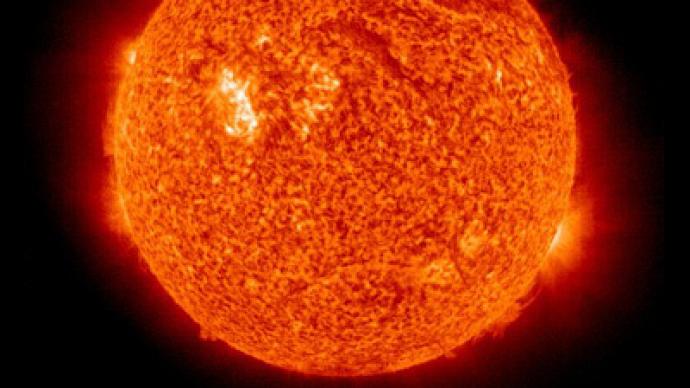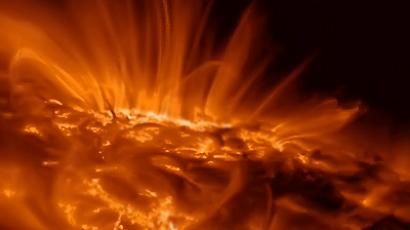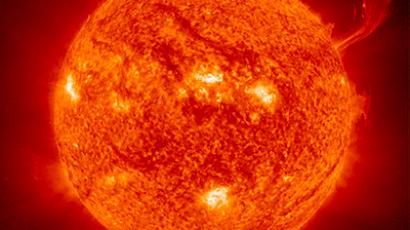Biggest solar storm in years bombards Earth

The largest solar radiation outburst in six years has reached Earth, having hit our planet with high-energy atomic particles at around 2 pm GMT, scientists say, threatening possible malfunction of communication satellites and power grids.
The major impact occured in the North Pole area.The polar zones have very little protection against outbursts of solar radiation due to the structure of Earth’s magnetic field. Many airliners have been avoiding northern polar routes as the proton storm may disrupt high frequency radio communications, NOAA's Space Weather Prediction Center physicist Doug Biesecker told Gizmodo in an interview.High precision GPS equipment can also be affected by solar radiation. Civilians however will hardly notice any positioning errors.The functioning of the ISS has not be affected. Taking into consideration the prognosis for the solar storm, the ISS crew has not even had to take additional radiation security measures.Meanwhile, the Northern Lights have lit up the skies above Scotland, northern England, and Ireland, which is a rarity for the relatively southern region. The light may be visible for a few more days according to the director of the Aurora section of the British Astronomical Association, Ken Kennedy.Massive ejections of plasma, or coronal mass, from the Sun have often resulted in communication and other satellites, as well as ground communications facilities failing. They can cause magnetic storms but bring no evident harm to the health of the planet’s population.The first solar storm this year was registered on January 19 by NASA’s extra-magnetospheric satellites at the Solar and Heliospheric Observatory SOHO, Solar Terrestrial Relations Observatory STEREO, and Advanced Composition Explorer ACE. Occurring after two storm-free months, that storm was ranked a relatively weak grade 5.The solar tempest of today is very different. The last time a storm of such force happened was five years ago, in May 2005.“For 24-25 January, we expect a magnetic storm that with a high probability can be attributed to a powerful class,” says the head of Russia’s Institute of Terrestrial Magnetism, Ionosphere and Radio Wave Propagation Sergey Gaydash.Gaydash says the new solar outburst was accompanied by a so-called ‘protonic event’ – a sharp increase in a high-energy proton stream with speeds of up to 4 million kilometers per hour. Dangerous levels of 10-50 MeV (megaelectronvolt) protons have already been exceeded, while the levels of 100 MeV protons – the most dangerous for satellites and electronic equipment – has not passed the critical threshold so far.














